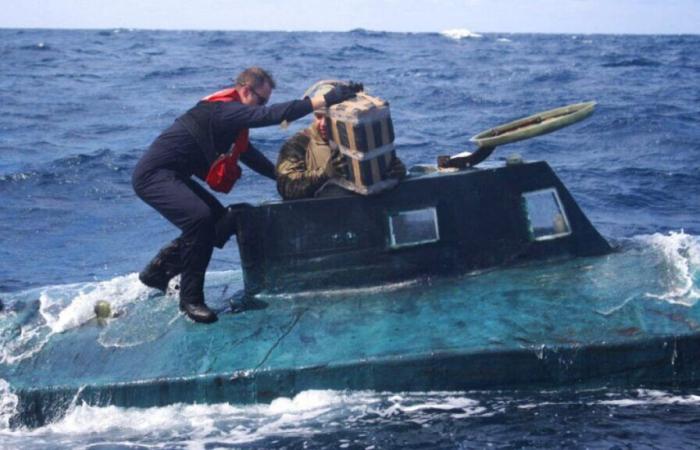The discovery of a submarine carrying cocaine in the Pacific is part of a six-week global operation against drug traffickers.
ADVERTISEMENT
The Colombian navy has discovered a new drug smuggling route between South America and Australia after intercepting a cocaine-filled “narco-submarine” in the Pacific Ocean.
The discovery was made during a six-week anti-drug operation, carried out jointly by Colombian authorities and security officials from dozens of other countries, which resulted in the seizure of at least 225 tonnes of cocaine, according to media reports.
“This may be Colombia’s largest seizure of cocaine in transit in history.”Colombian President Gustavo Petro said in a message on X.
The interception would have deprived drug gangs of at least $8.4 billion (€8 billion), according to the Colombian navy.
At least 400 people were reportedly arrested as part of the operation.Orion“, which also made it possible to stop illegal arms deliveries and arrest migrant smugglers.
According to media reports, one of the six semi-submersible vessels – or “narco-submarines” – intercepted during the operation was heading towards Australia, but was stopped 2,000 kilometers southwest of the Clipperton Island, an uninhabited French coral atoll located in the Pacific.
Colombian authorities reportedly said it was the third vessel of its type discovered in this part of the Pacific and that the boats were capable of traveling a distance of at least 16,000 kilometers without needing to refuel at sea.
The 10-25 meter vessels are not fully submersible, but they sit low in the water and can barely be seen as they skim the ocean.
“It’s a new route that they opened for semi-submersibles,” Manuel Rodríguez, head of the Colombian Navy's anti-drug unit, told the media on Wednesday.
According to Colombian security forces, a kilogram of cocaine can sell for up to $240,000 (227,000 euros) in Australia, around six times more expensive than in the United States. OECD data shows Australians are the top per capita users of cocaine in the world, followed by their British counterparts.
Narcotics experts say the growing use of narcotics submarines is likely a response to intensifying maritime security operations as criminal gangs try to evade detection.
Last year, the Colombian navy captured ten narco-submarines, as the country works to limit cocaine production.
Rebel groups and drug gangs have recently retaken territory abandoned by the Revolutionary Armed Forces of Colombia (FARC), following the group's 2016 peace deal with the government.
The area of Colombian land devoted to growing coca leaves – the raw ingredient for cocaine – increased by 10% last year to cover the largest area in more than two decades, the UN Office said United Nations Against Drugs and Crime (UNODC) last month.
As a result, potential cocaine production in 2023 increased by 53% to 2,644 metric tons, compared to 1,738 metric tons the previous year, according to UNODC research.






